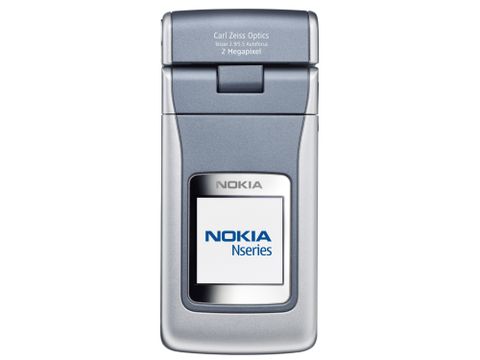TechRadar Verdict
As much a camera as a phone, the N90 benefits from decent photo capture, two screens and an unmatched ability to edit and share what you shoot. But it's a big beast of a device
Pros
- +
Extensive extra functions
Good screen
Cons
- -
Can be sluggish to use
Colours can seem insubstantial
Why you can trust TechRadar
When mobile phones were young, the smaller the handset, the cooler. That changed with the arrival of chunky but powerful 3G phones - and if the N90 is anything to go by, the trend for generously proportioned models seems to be spreading down to traditional GSM handsets.
It's a pocket-bulging 11.2cm long, nearly 2.5cm wide and weighs enough (175g) that it can double as a weapon if a mugger takes a shine to its retro-modern two-tone styling.
Of course, Nokia would have you believe that the N90 is more than just another 2.5G tri-band cameraphone - it's a multimedia powerhouse, capable of recording and editing 2MP images and video clips, and much more besides.
For starters, the lens is from no less a manufacturer than Carl Zeiss, although you have to wonder what the 19th-century maker of high precision microscopes himself would have made of this tiny scrap of plastic. It has a basic autofocus system but no zoom, and is mounted on a hinge that can rotate through an impressive 320 degrees.
There are two main lens configurations. When the phone is closed, spinning the hinge through 90 degrees fires up the camera in just a second, with the outer 1.3-inch LCD screen providing live framing and camera info. In this mode, the shutter falls unconventionally under your left index finger, with the joystick next to it controlling flash mode (including red-eye reduction) and the digital zoom.
If you flip the phone open and around, you can hold the N90 side on, like a palmcorder. This brings the main 2.1-inch screen into play, puts the shutter back under your right thumb and lets you use two screen-mounted soft controls to choose image options. This inner screen is much brighter and clearer than the outer, although it still lags behind the superb screen found on the 3mp Sharp 903.
Photo features are good. There's a nippy 1.5fps burst mode that works well even in dark conditions (remember, LED lights don't require the recharge time of the more powerful flashes on standalone cameras). You can choose from five white balance presets, set the exposure compensation and choose digital colour effects.
In use, the N90 suffers from sluggishness when focusing, shooting and saving, although the video mode is zippy. Image quality is definitely a step up from most cameraphones. The N90 handles complex lighting, detailed subjects and copes refreshingly well with low-light scenes. However, colours can seem insubstantial and stay very close if you're using the LED 'flash'.
Extra functions are extensive, with built-in image editing (sharpness, colour, cropping, resizing, text) and PictBridge printing via USB or Bluetooth. The N90 comes with Kodak's mobile service installed, so you can upload images to the EasyShare gallery for viewing or ordering physical prints. It also has lots of other cool software, such as Nokia's LifeBlog, a decent media player and Java/Symbian games.
The N90 is, as promised, much more than just a phone. The only worry is that Nokia has squeezed so many functions and so much flexibility into a single handset that it's in danger of being seen as a 'lite' PDA rather than a portable communication device. Mark Harris
Tech.co.uk was the former name of TechRadar.com. Its staff were at the forefront of the digital publishing revolution, and spearheaded the move to bring consumer technology journalism to its natural home – online. Many of the current TechRadar staff started life a Tech.co.uk staff writer, covering everything from the emerging smartphone market to the evolving market of personal computers. Think of it as the building blocks of the TechRadar you love today.

